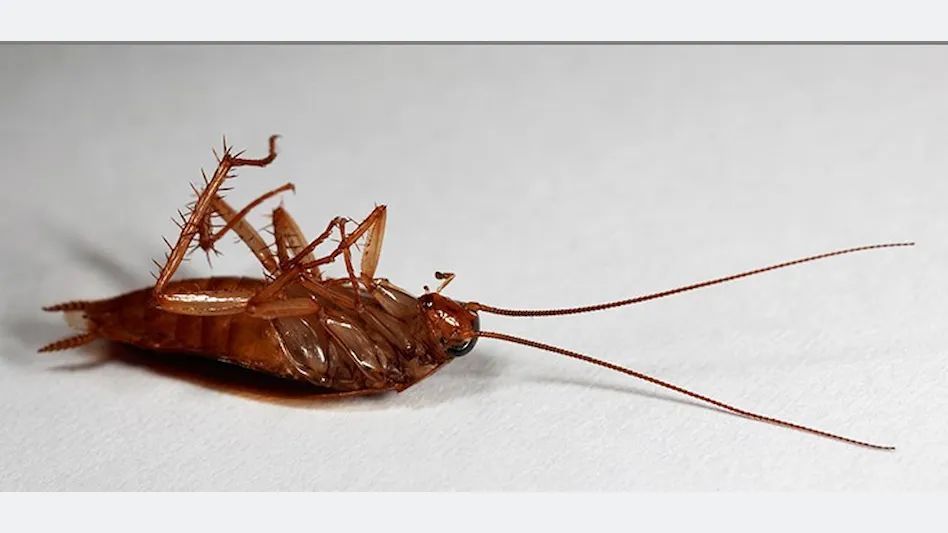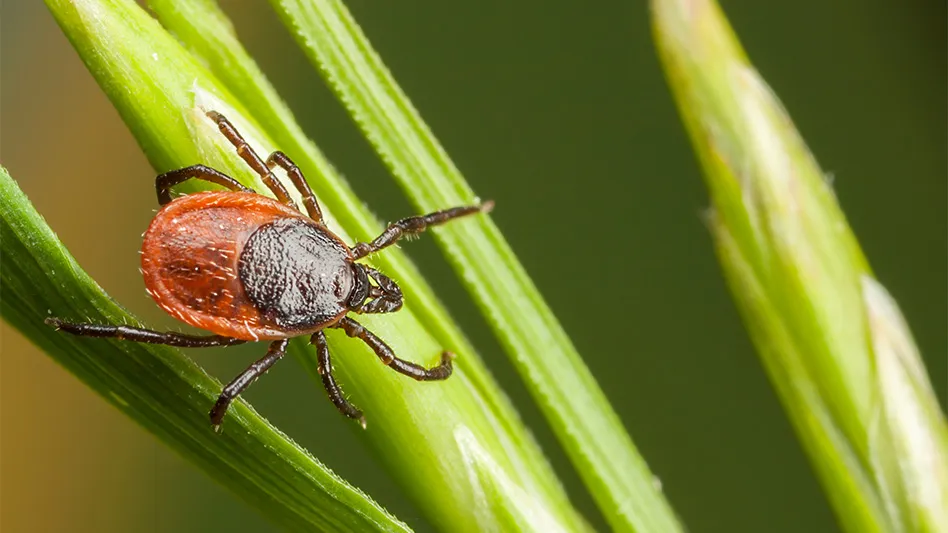
Gel baits and granular baits each have ideal situations for use. Here’s how to use what, where and when.
One of the more difficult pest problems to gain effective control of is a cockroach infestation. Cockroaches live in small spaces including in and around appliances, cabinets, electronics, and under sinks and floor drains. They also can commonly be found in cracks and crevices throughout a home or structure.
Cockroaches are nocturnal so they are typically more active at night and hide in warmer or wet places during the day. Inspections will highlight the areas where cockroach activity is prevalent, leading to control methods as the next step.
According to the Mallis Handbook of Pest Control, some treatments are more effective in “homes with good sanitation” while other product solutions are better in clean homes or adhere stronger “when applied onto oily surfaces.” Each solution obviously depends on the individual situation, but gel and granular baits are two of the more mainstream options for control.
GEL BAIT TREATMENTS. Mallis states that over the last few decades pest control has shifted from sprays to gels/bait, much of this is focused on cracks and crevices. In fact, Mallis states that a monthly baseboard and crack-and-crevice bait treatment program is more effective than any other method of treatment to control cockroaches in this area.
Gel bait treatments need to be targeted and technicians need to apply such products smartly to ensure they don’t reach and affect any pets in the home.
“Gels are applied in cracks and crevices, so you need to find little spots in hidden spaces,” said Lisa Botts, owner of Peacock Pest Prevention. “You don’t want dogs to find them, but you need to put them where cockroaches are and where they’ll find it. But you need to hide it, don’t make it look like caulk make sure it’s in the opening.”
Patrick Boland, director of operations for Scherzinger Pest Control, agrees that treatments need to be as close to the pest as possible.
“Baits should always be applied close to harborage (within a foot to two),” said Boland. “Gel bait should be applied in pea-sized placements with many placements.” Boland’s Scherzinger operates in Ohio, Indiana and Kentucky. Of those areas, Cincinnati is typically ranked in “top lists” of cockroach-infested cities in the United States.
GRANULAR BAITS. There are a number of granular baits containing boric acid, imidacloprid, fipronil or indoxacarb, available for use outdoors to control cockroaches, according to Mallis. These products are sprinkled into and around cockroach harborages such as tree holes, firewood, piles of rocks, landscape timbers, heavy ground cover and landscape mulch.
Additionally, Mallis suggests that baits are most effectively used in attics, basements and crawlspaces to control smokybrown, American, oriental and similar cockroaches.
For the use of granular products, Boland has a few ways to use them, depending on the location needing treatment. “Granular is best used in trays or voids indoors and spread out in the outdoors.”
Botts uses granular exclusively on the outside. “Granulars work well on Asian cockroaches and that’s a huge problem. Cockroaches freak people out because they’ll tell me ‘I keep my house clean and I have roaches all over’ and it’s those hidden spaces.”
John Komor, president of Florida’s Johnny Bugs, performs a lot of cockroach business in Manatee, Sarasota and Charlotte counties.
Komor suggests a strong attention to detail to ensure success. “Baiting is a tedious process that requires close inspection and multiple small placements in areas of activity.”
Latest from Pest Control Technology
- Ground Control
- Scientists, PMPs Collaborating to Map Termite Distribution in Southern U.S.
- Viking Pest Control Organizes a Charity Bike Build for Local Families
- Gaining Control of Structure-Infesting Carpenter Ants
- Big Blue Bug’s Brian Goldman Receives Rhode Island Small Business Person of the Year Award
- UF Researchers Examine How Much Bait it Takes to Eliminate a Subterranean Termite Colony
- Women in Pest Control Group Continues to Grow, Provide Opportunities in the Industry
- NPMA Announces Results of 2024-2025 Board of Directors Election





